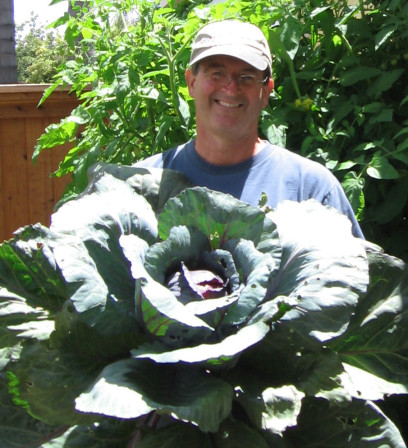The Dirt on Fertilizer
Mission Hills Garden Club has done it again! Once more, I found myself fascinated by an unlikely subject. This time it was fertilizers and dirt. Duane Wheeler who works for E.B. Stone was the May speaker. Wheeler, a self-proclaimed “gardening nut,” gave us a brief history of the EB Stone Company before explaining what each product is and what it does.
Many years ago, a San Jose farmer, Bruce Stone, could not find the right soil amendments to produce the quality of plants he wanted. He fiddled with various ingredients and began growing magnificent vegetables. Impressed, his neighbors begged him to sell them some of his “blend.” Eventually, Mr. Stone was so busy he had to create a business. In 1932, he moved his facility to Salinas. By 1936, he was selling a line of fertilizers under the name of GreenAll, a family owned and run company. Everything he sold was naturally produced; no man-made chemicals were used, and he did not cut corners ever. However, 40 years later Stone was an old man. He sold his company to the Crandall family. Instead of focusing on the agricultural fertilizer business, they directed their attention to the home gardener. Initially they limited their business to Northern California, but as they invested in new packaging, the expanded their market geographically, selling only to independent nurseries. However, they did insist on the same meticulous quality of their products.
According to Wheeler, both Crandalls are truly organic gardeners. They decided to make an EB Stone
brand of organic products. By 2001, they had extended their market to Southern California and the following year, to Oregon. They make all their own fertilizers and soils with their employees monitoring quality and testing the soils regularly. Most of their business is through independent nurseries; the rest goes through nursery hardware outlets.
Wheeler went into some detail (eliminating chemical formulae) about the components of soils and amendments. While organic soils and amendments are definitely better for the health of the plant, not all organic products are the same. Wheeler says it is essential to read the list of ingredients which are not in alphabetical order; they are listed in order of quantity of each ingredient. The first ingredient listed should NOT be “composted forest products.” In fact, you do not want to be any product with “composted forest products” as an ingredient. These products are also known as “green waste.” Green waste is just what it says it is — plant matter that probably contains a host of pesticides and other “pharmaceuticals” that were given to it before it was processed. The mass-produced potting soils sold by chain nurseries usually list this as the first ingredient. Needless to say, no one sifts through the greens to remove pesticides and “pharmaceuticals” before processing them. Furthermore, the bark used in these mixes is typically soft wood which breaks down much more quickly causing the soil to compact closing air and water spaces. These “bio solids” are known as humus. Wheeler passed around a bag of this asking us to note the “funky” odor.
A good organic soil should list fir or redwood bark as its first ingredient. These are known as hardwoods (not furniture type hard wood) as they are harder than pine. Hardwood bark lasts longer because, Wheeler says, it is “more fibery.” It is also more expensive, but because of its irregular “chip” form, it provides space for air and water. It is a food source for essential soil microbes as well.
Edna’s Best Potting Soil contains “yucca shidegera saponin” to help receive and retain moisture when watered. In addition, it has endo and ecto mycorrhizal fungi. These are desirable organisms that colonize most plants’ roots, becoming a “natural extension of the root system.” This potting soil includes many other ingredients including worm castings (a source of food and a soil conditioner as well), bat guano for nitrogen, phosphorous, and potash; kelp meal; oyster shells; chicken manure which is a natural fertilizer and soil conditioner; and gypsum. Not only does gypsum contain positive calcium ions, but as a soil conditioner it loosens the bonding of clay soil. EB Stone soils also contain mushroom compost, which maintains air and water space. It provides nutrients and has organic matter that has been composted for at least eight months. Additional ingredients in this compost include other soil conditioners – wheat straw; soil acidifiers (cottonseed hulls and meal), plus Canadian peat moss to absorb and retain water. In addition to these, you may add kelp meal for fertilizer supplement and micronutrients. Alfalfa meal makes a great fertilizer supplement for flowers and roses. These ingredients are found in the various mixtures EB Stone sells, but you can buy them separately so you can create your own preferred proportions for your garden.
In his own garden, Wheeler built four foot by ten foot raised planting beds which contained 100 per cent Soil Booster in each bed supplemented with one bag of chicken manure and one of Sure Start. His results are astonishing. His plants grow to enormous sizes and taste the way vegetables and fruits should taste. Remember to look for fir or redwood bark as the first ingredient and shun anything that says “composted forest products.”
On July 25, join us when Vince Brown will tell us about Liberty Station’s revolutionary new market: Seasonal, Organic and Local (SOL) Markets. The meeting will be at 4070 Jackdaw from 6 p.m. to 8 p.m. Guests pay $10.00, which may be counted as part of your $35.00 membership fee if you join that night. A couple’s membership is $50.00. Join us. You’ll be glad you did.
Category: Life Style








